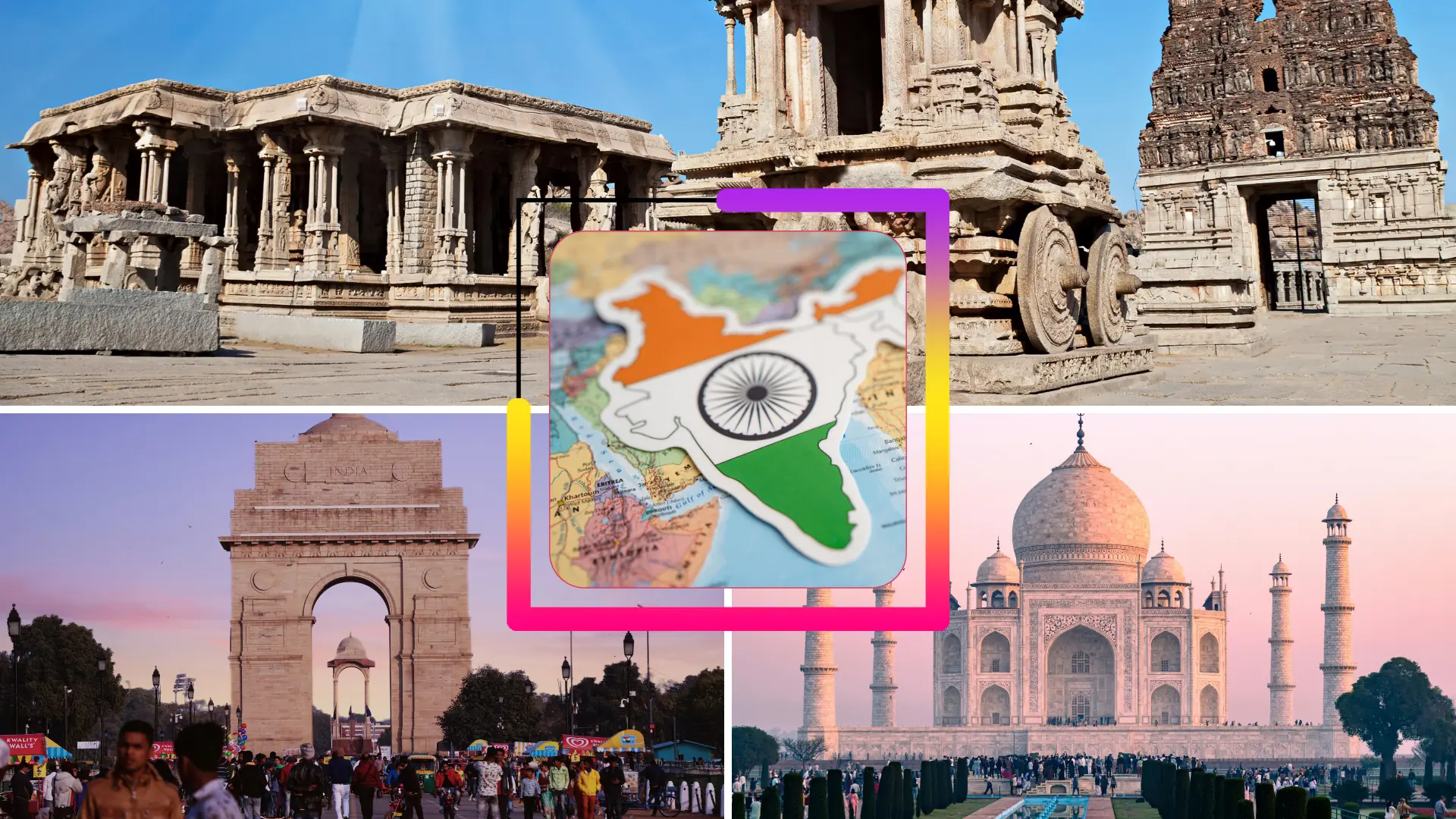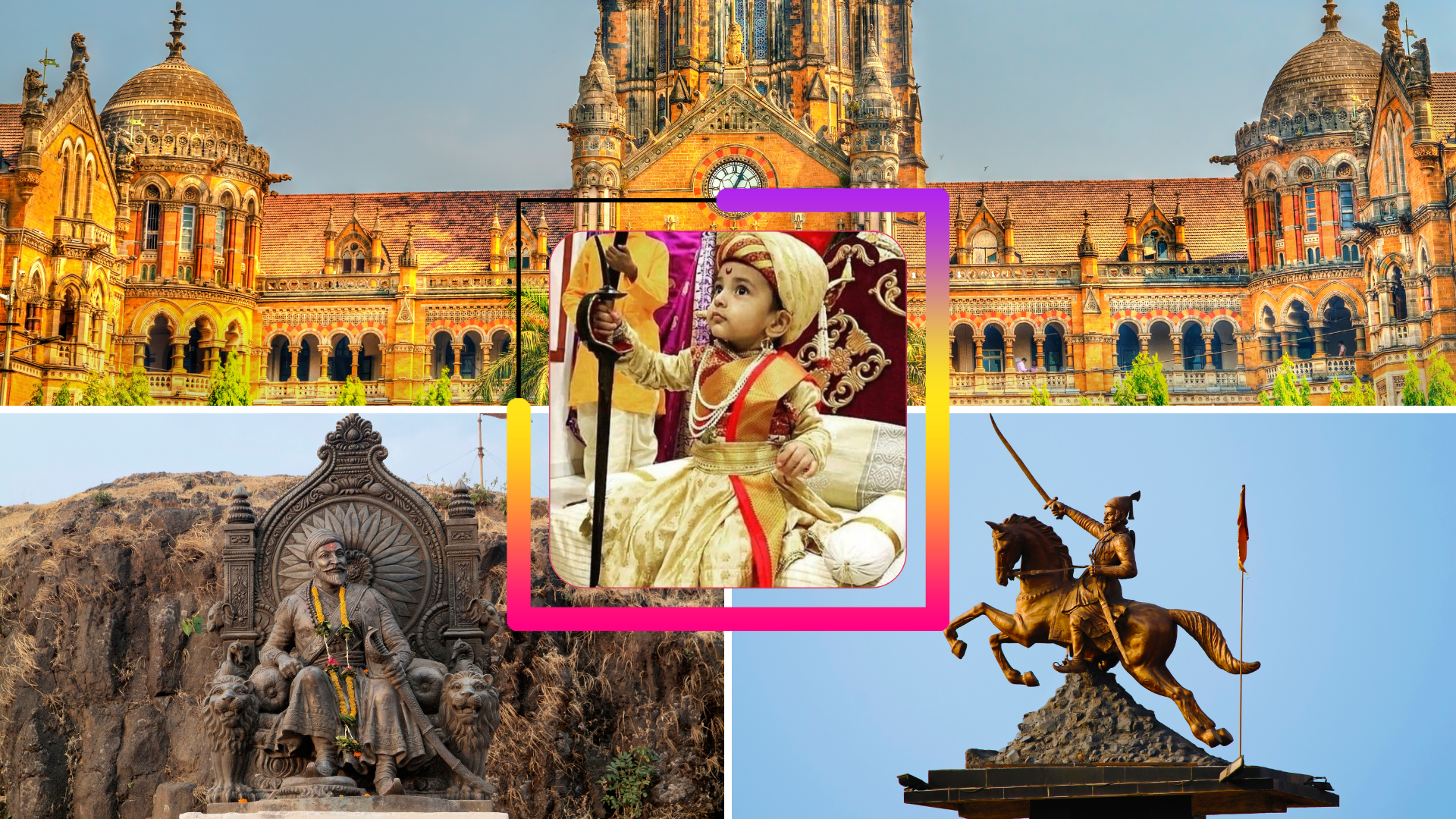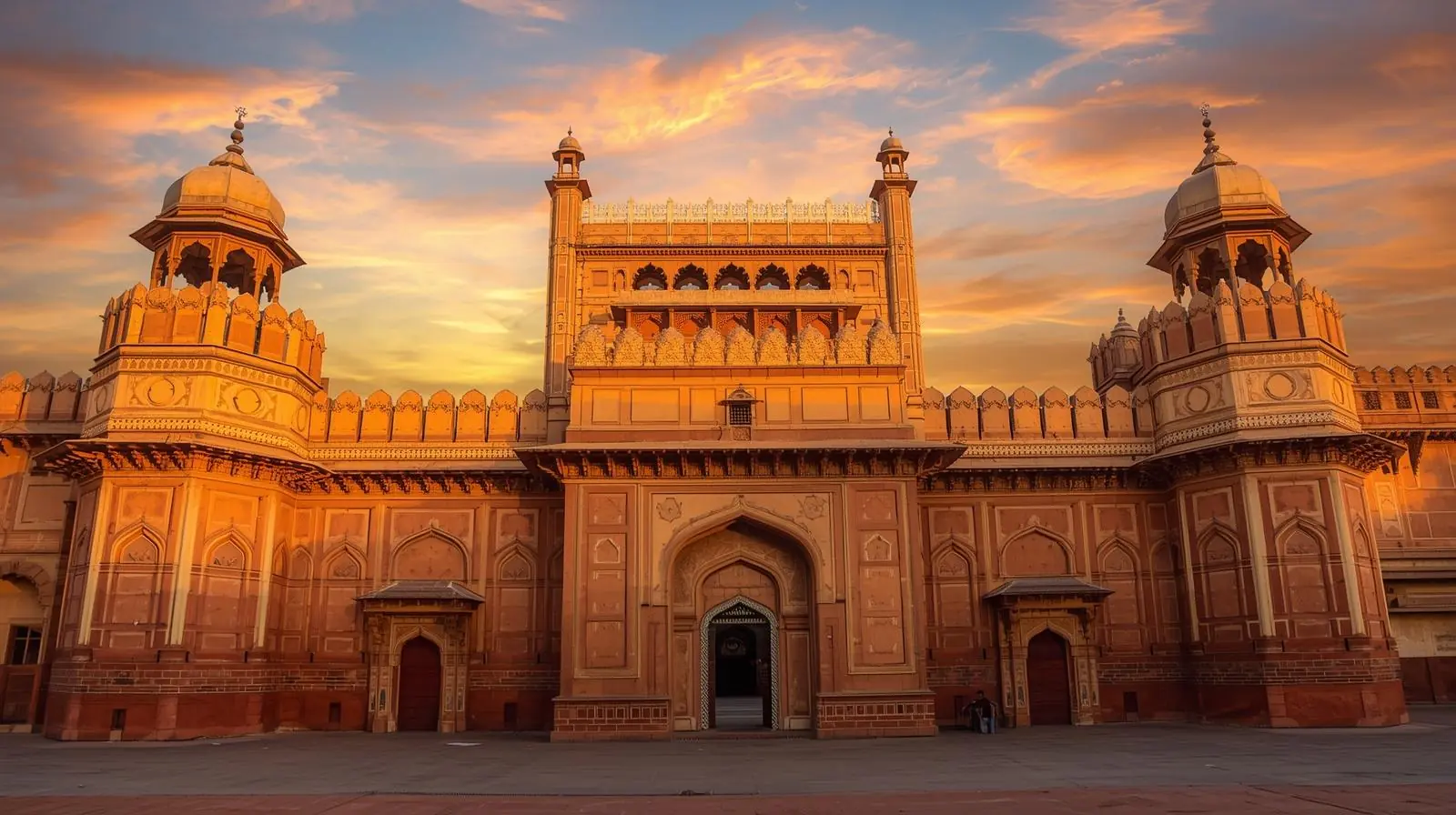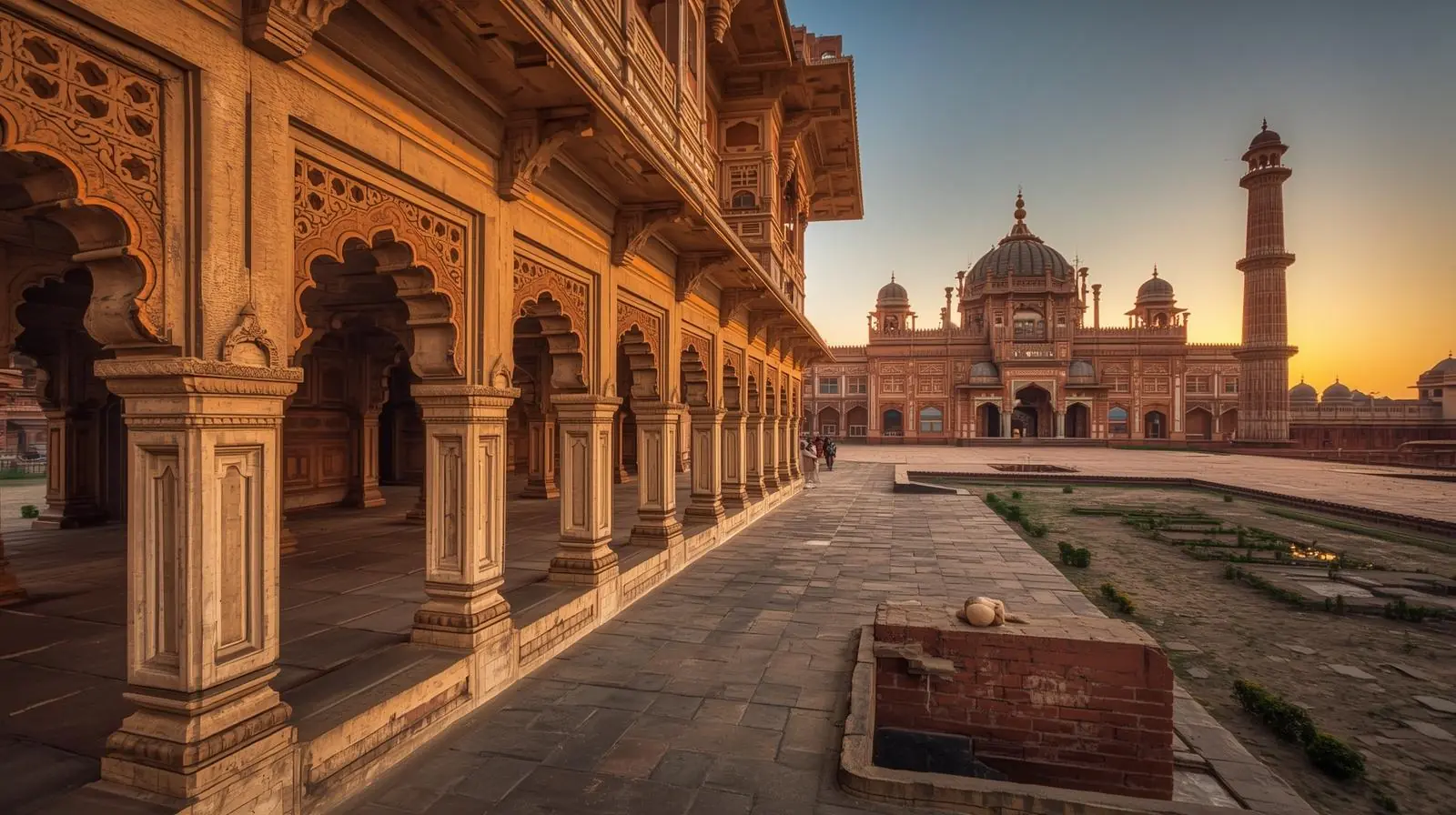Introduction
Agra Fort, also called the Red Fort of Agra, is one of the most famous monuments of Mughal history and a UNESCO World Heritage Site. Located on the banks of the Yamuna River, this fort is a grand symbol of power, artistry, and Mughal legacy. Spread over 94 acres, it is built with red sandstone and holds within its walls palaces, halls, and mosques that narrate centuries of royal tales.
History of Agra Fort
Agra Fort’s story begins much earlier than the Mughal era. Originally, it was a brick fort held by the Rajputs in the 11th century. Later, in 1565, Emperor Akbar rebuilt it using red sandstone, making it the primary residence and stronghold of the Mughals. His grandson Shah Jahan added marble structures and beautiful palaces to it.
One of the most emotional chapters of its history is when Shah Jahan, who built the Taj Mahal, was imprisoned by his son Aurangzeb in this very fort. From here, he spent his last years gazing at the Taj Mahal, the monument he built for his beloved wife Mumtaz Mahal.
Architecture of Agra Fort
The architectural brilliance of Agra Fort makes it one of the greatest monuments in India. The fort has 70-feet-high walls and four gates, of which Delhi Gate and Amar Singh Gate are the most significant.
Inside the fort are several stunning structures, including:
- Jahangir’s Palace – A blend of Hindu and Central Asian styles.
- Khas Mahal – A marble palace built by Shah Jahan.
- Diwan-i-Am – Hall of public audiences.
- Diwan-i-Khas – Hall of private audiences, where the famous Peacock Throne once stood.
- Sheesh Mahal – Known for its mirror-work and royal beauty.
Each section of the fort has a story, reflecting the grandeur of the Mughal dynasty.
Agra Fort – The Red Sandstone Fortress
Cultural and Historical Importance
Agra Fort served as the Mughal capital before Delhi and was the center of administration, military power, and royal residence. Major decisions, coronations, and events of Indian history were witnessed here. Today, it is not only a heritage monument but also a reminder of India’s glorious Mughal past.
Best Time to Visit Agra Fort
The best time to visit Agra Fort is October to March, when the weather is pleasant and suitable for sightseeing. Summers in Agra are extremely hot, making it less comfortable for exploring.
Visitor Information
- Location: Rakabganj, Agra, Uttar Pradesh (2.5 km from Taj Mahal)
- Timings: 6:00 AM – 6:00 PM (open all days)
- Entry Fee:
- Indians: ₹40
- Foreigners: ₹550
- Children below 15 years: Free
Tourist Footfall
Agra Fort is one of the most visited monuments in India. Every year, millions of tourists from across the world visit this historic site along with the Taj Mahal, making Agra one of the top travel destinations in India.
Conclusion
Agra Fort is more than just a fort – it is a living testimony of India’s royal past, Mughal artistry, and timeless history. A visit here is a journey into the grandeur of emperors and the stories that shaped Indian heritage.
























































Leave a Comment